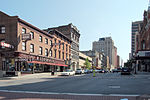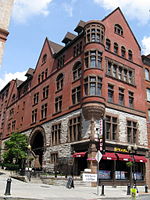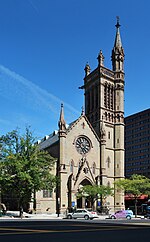Home Savings Bank Building
1927 establishments in New York (state)Art Deco architecture in New York (state)Art Deco skyscrapersHistoric district contributing properties in New York (state)National Register of Historic Places in Albany, New York ... and 4 more
Office buildings completed in 1927Office buildings on the National Register of Historic Places in New York (state)Skyscraper office buildings in New York (state)Skyscrapers in Albany, New York

The Home Savings Bank Building is an office building located in downtown Albany, New York, United States at 11 North Pearl Street (NY 32). At 19 stories and 267 feet (81 m) tall, it is the eleventh-tallest building in the city.
Excerpt from the Wikipedia article Home Savings Bank Building (License: CC BY-SA 3.0, Authors, Images).Home Savings Bank Building
State Street, City of Albany
Geographical coordinates (GPS) Address Nearby Places Show on map
Geographical coordinates (GPS)
| Latitude | Longitude |
|---|---|
| N 42.64994 ° | E -73.752151 ° |
Address
New York State Bank Building
State Street 69
12207 City of Albany
New York, United States
Open on Google Maps









